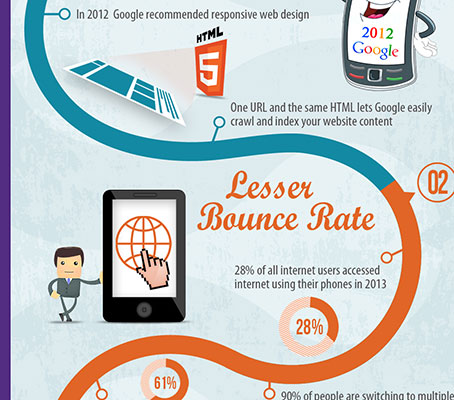The Advancement Of Site Design: From Past To Existing
The Advancement Of Site Design: From Past To Existing
Blog Article
Writer-Booker Peters
In the past, sites were simple and concentrated on information. Navigation was direct, and layout was for desktop computers. Currently, customer experience is crucial. Data guides designs for easy navigating. Receptive designs suit different devices. Today, dark setting reduces strain, and minimalist menus boost navigation. Interactive attributes engage individuals, and bold visuals attract attention. AI integration enhances involvement. See how design has actually progressed to improve your on the internet journey.
Early Days of Website Design
In the early days of web design, simpleness reigned supreme. Internet sites were basic, with restricted shades, typefaces, and layouts. The focus got on giving info as opposed to flashy visuals. Users accessed the internet via slow dial-up connections, so speed and capability were crucial.
Navigation food selections were straightforward, commonly situated on top or side of the web page. Sites were developed for desktop computers, as mobile browsing had not been yet common. Web content was king, and developers focused on very easy readability over intricate layout elements.
HTML was the key coding language used, and developers had to work within its constraints. Computer animations and interactive features were very little compared to today's criteria. Websites were fixed, with little vibrant web content or personalized customer experiences.
Surge of User-Focused Layout
With the evolution of internet site style, a change in the direction of user-focused layout concepts has actually become increasingly famous. simply click the following page , creating websites that focus on customer experience is essential for engaging site visitors and accomplishing organization objectives. User-focused design involves understanding the demands, preferences, and habits of your target audience to tailor the web site's layout, content, and includes appropriately.
Designers currently perform thorough study, such as user surveys and functionality screening, to collect understandings and responses straight from users. This data-driven approach aids in producing user-friendly navigating, clear calls-to-action, and visually appealing user interfaces that resonate with visitors. By putting the customer at the facility of the layout process, internet sites can provide an extra personalized and enjoyable experience.
Receptive design has additionally emerged as a vital element of user-focused design, guaranteeing that internet sites are enhanced for different tools and display dimensions. This adaptability boosts accessibility and usability, dealing with the diverse ways individuals engage with websites today. Essentially, the increase of user-focused layout signifies a change towards developing electronic experiences that prioritize the requirements and assumptions of completion individual.
Modern Trends in Website Design
Discover the most recent patterns shaping website design today. One famous fad is dark setting design, offering a smooth and modern-day appearance while lowering eye stress in low-light environments. One more crucial fad is minimal navigation, streamlining menus and enhancing user experience by focusing on essential elements. Incorporating micro-interactions, such as animated buttons or scrolling impacts, can develop a much more interesting and interactive internet site. Receptive design stays critical, guaranteeing seamless individual experiences across different devices. Furthermore, using strong typography and unbalanced formats can add aesthetic rate of interest and accentuate certain web content.
Integrating visit the up coming webpage , like chatbots for customer support or personalized recommendations, improves individual engagement and enhances processes. Ease of access has additionally come to be a significant trend, with developers prioritizing comprehensive layout methods to satisfy varied individual demands. Welcoming sustainability by optimizing site performance for rate and efficiency is an additional arising fad in website design. Collaborating with user responses and data analytics to iterate and improve design continually is necessary for staying appropriate in the ever-evolving electronic landscape. By welcoming these contemporary fads, you can create a visually appealing, user-friendly site that reverberates with your target market.
Conclusion
As you reflect on the evolution of web site design from the early days to now, you can see just how user-focused style has actually come to be the driving force behind contemporary trends.
Welcome the trip of change and adjustment in web design, always maintaining the individual experience at the center.
Tippingpointdigital
Remain current with the latest trends and technologies, and never ever stop progressing your method to develop visually sensational and straightforward internet sites.
Evolve, adjust, and develop - the future of web design is in your hands.
